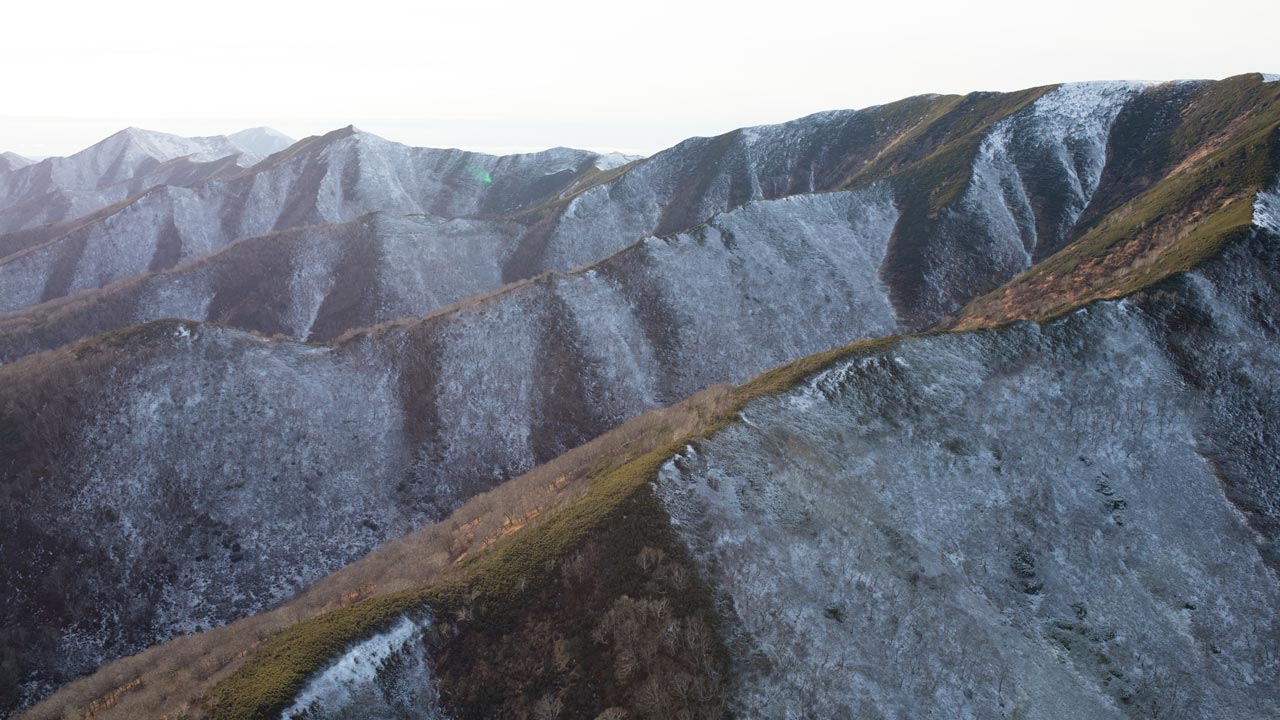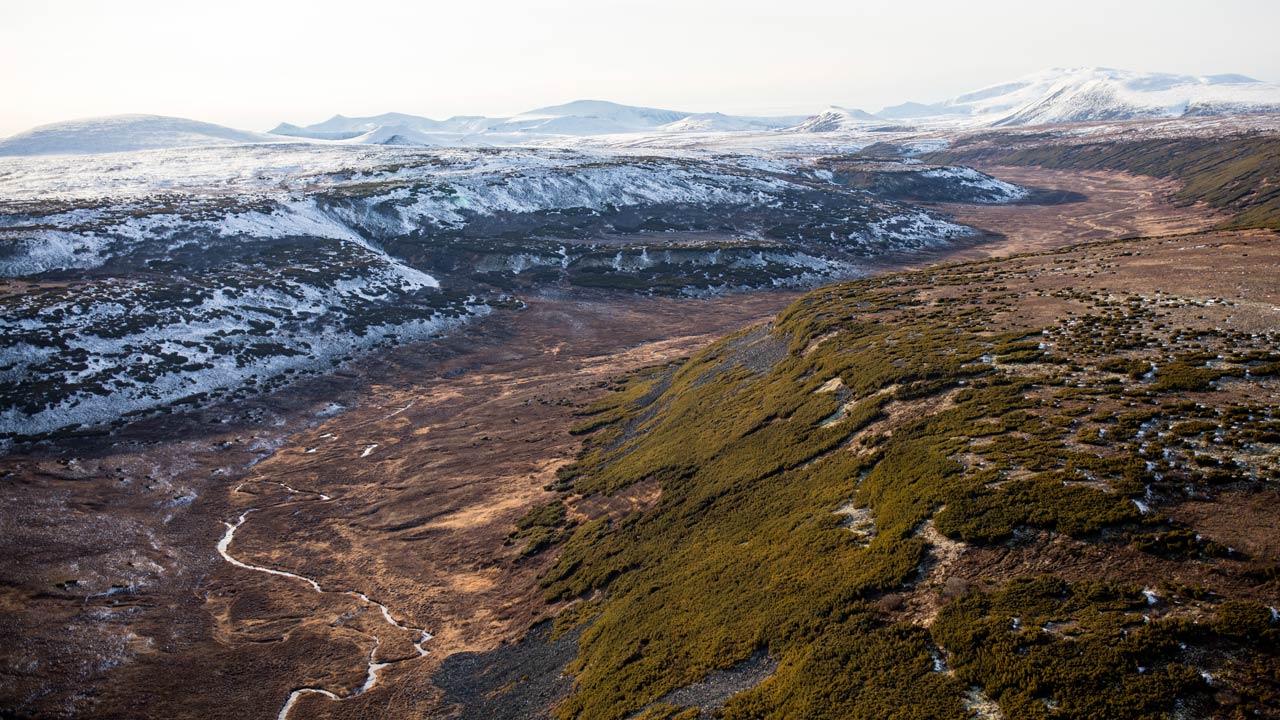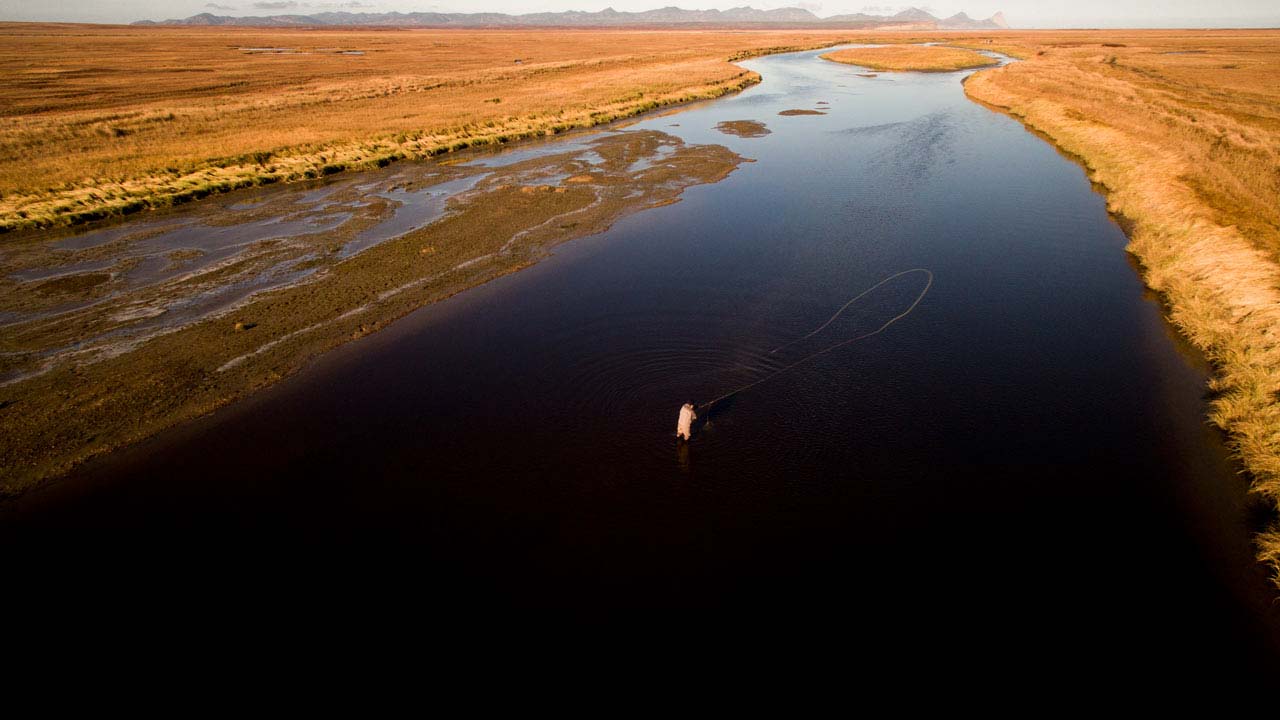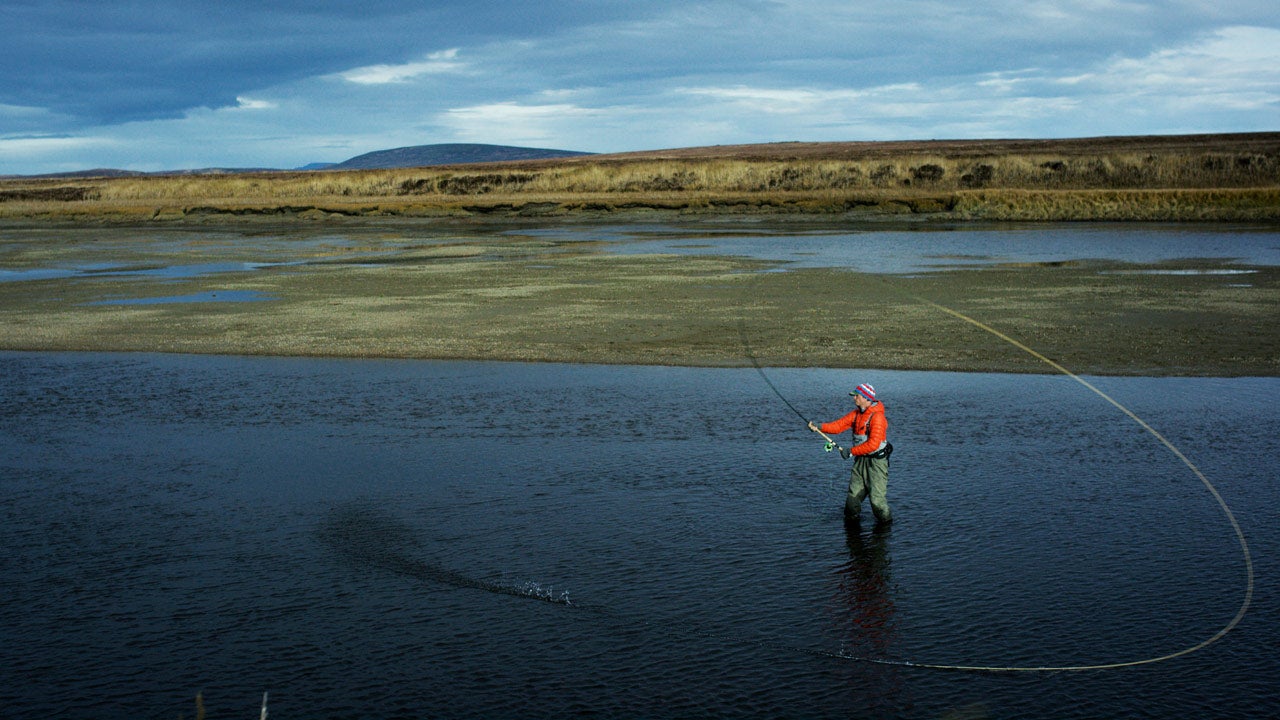Kamchatka Steelhead Project
Story by Ryan Peterson
For fly fishers, though, the California-sized scimitar of land just west of Alaska is an exotic utopia, where trout feed on rodents and salmon swarm like that old timer tells you they used to do here. But Kamchatka is home to another mysterious population of giant fish, the mere mention of which is enough to pump adrenaline through the veins of an extra-crunchy subculture of devotees, myself among them. In Russian, the fish is called syomga. In English, steelhead.
The fanatical lore and cult that go along with steelhead fly fishing needs little introduction to a fisherman. A bass or trout guy’s eyes might roll at how we steelheaders catch nothing most of the time and like it, but he respects the pursuit and if it were more of a sure thing, would not pass on twenty pounds of white-hot electricity connected to a line. A muskie or permit guy, meanwhile, shares an understanding of why the disparate dedication-to-payoff ratio works out in the end, just maybe not the nasty weather conditions we work in.
For everyone else, let’s put it this way: if you were to spend a day fishing for steelhead in their more well-known range of the Pacific Northwest, odds are at the end of it you’d go, "Meh." To actually catch one is indeed a low odds proposition. Compared to their thronging, happy-to-the-fly, spawn-and-die salmon cousins, steelhead are solitary, mercurial, beautiful, as if Mother Nature painted each one with a Mona Lisa smile. To hook one, timing and mood are all important, both on the fish’s part and yours. Within steelheaders’ jargon, the Jedi references go on and on.
But the extreme number of days or even weeks that can pass between bites is in reality less a matter of their being tricky, than that there simply aren’t many left. Today the great steelhead rivers between southern California and Puget Sound offer a pittance of habitat compared to a century ago. We’ve done a lot of things in that time that steelhead cannot abide. Mines, clearcutting forests, industrial agriculture, bycatch in commercial fishing, and especially dams would not exist if steelhead ran the show. What’s more, the few wild steelhead that do still persevere are being further deleted by cartoon armies of hatchery-origin fish which compete for food and habitat. Though a well-meant (and extremely expensive) “Oops, sorry” to nature, the science of hatchery mitigation in the USA ironically and tragically reveals wild fish to be losing ground to the process, their gene pools being muddled with so much mayonnaise.
But if you jump the Bering Sea and swerve up the Okhotsk Sea coast of western Kamchatka, a small cluster of rivers are home to the only steelhead that spawn in Asia. There, through the unlikely happenstance of it being sealed off during the Cold War, a massive tract of subarctic wilderness has been preserved in its primordial state. When a Moscow State University ichthyologist-explorer, Ksenia Savvaitova, visited the Kvachina River in the 1970s — around the time the toilet started to flush on steelhead in the U.S. — a native Koryak woman told her it was still “as good as God made it.”
Through her visionary efforts, Kamchatka steelhead were protected, not so much out of concern for their numbers, but because their range is small. Mess up just one of their half-dozen natal streams and you cut down a huge percentage of their total.
To see a place today as it existed before humans went viral is a rare thing. Through such a window, you can see much too about the present and future. This is the guiding principle of the Kamchatka Steelhead Project (KSP) - a joint U.S.-Russian scientific study ongoing since 1992 and the longest running study of the species in history. Not just an example of fruitful international cooperation, the KSP also represents a more unusual cooperation between academia and recreational angling. Steelheaders keen on adventuring to the fish’s last wild bastion fund annual fall expeditions and then join as data collectors; their sampling devices being fly rods and barbless hooks. From each fish brought to hand, scale and DNA samples reveal not only the age of the fish, but how many years it has spent in river and ocean, how many times it has spawned and in what years, and even, through analysis of its ear bone, much information about its mother. By extension, the data helps us better understand what exactly a fish needs from its surroundings in order to thrive, and how it can or cannot adapt to changes in the same. In this way, Kamchatka steelhead are like a baseline control group against which all the North Pacific can be viewed. The hope is that our little science project here can help us not only keep what we have left, but inform management on our side of the Pacific so we can maybe even get a bit back.



Kamchatka ticks all the boxes for me as a steelhead fly fisher — big, gorgeous, wild fish that inspire heightened learning and consciousness. While most first-timers would hang up their 13-foot spey rods after that single day of steelheading, some tiny fraction of you would fall off a cliff into a similar, deep river of obsession. You’d feel rewired, like your life would forever split into binary divisions around the question, "Will what I’m doing right now help me catch more steelhead, or not?" The world starts to look and feel different, too. Beyond roads and political boundaries, you see watersheds, mountains, forests. You wonder where your own drinking water comes from and your electricity. And when, finally, you connect with a wild steelhead, it is really a connection to nature that our species has felt for at least a couple hundred thousand years — a connection the last 100 years hasn’t quite yet severed.
My friend and fellow KSP guide, Justin Miller, likes to say about steeheading, “Zero fish is a great day! One fish is a great day! Two fish is phenomenal.” But beyond all this philosophy and intellectual mumbo jumbo, catching a steelhead is real damn fun. One day in Kamchatka last season, eight of us caught 39. There’s no adjective for that.
To learn more about the Kamchatka Steelhead Project or to join it in 2017, check in with expedition organizers at The Fly Shop.

